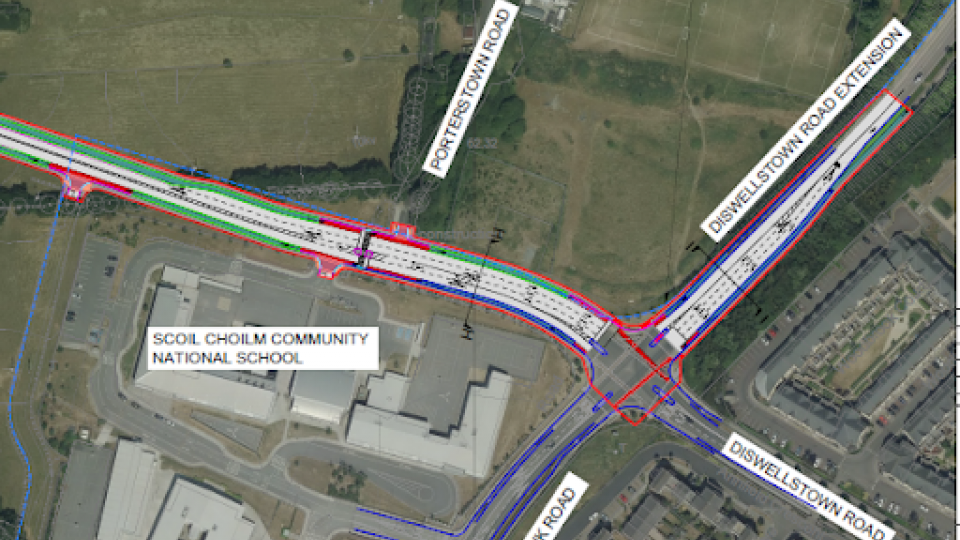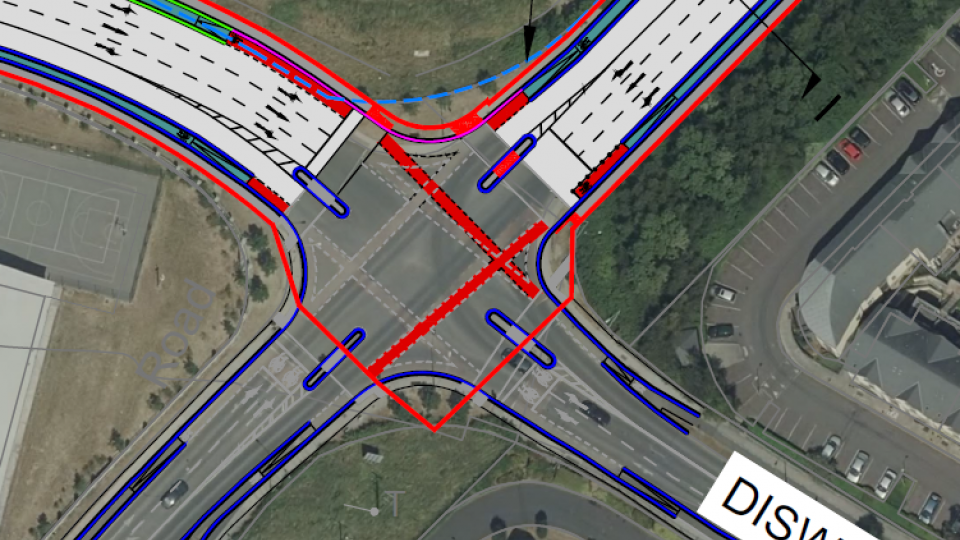Diswellstown Road upgarde designed with an extra vehicle lane without improvements to cycle lane
Fingal County Council is currently undergoing a public consultation for a major development called Kellystown. As part of this large scale development they have gone out to consultation on a road upgrade to facilitate the increased traffic movements in the area. For the purpose of this article we will focus on the specific road junction upgrade on the Diswellstown road also called the Dr Troy bridge. . Further articles will be published on the consultation for Kellystown which ends on Nov 6th 2020.https://consult.fingal.ie/en/consultation/kellystown-road-%E2%80%93-non-…
The proposal is to add a left turning lane heading south off the Dr Troy bridge onto the Diswellstown road. The current road design has the cycle lane go from a segregated cycle path to an on-road cycle lane sharing the road with vehicles. Unfortunately the cycle path disappears half way down the bridge at the most important time for people who cycle and leaves them exposed to left turning vehicles and HGV’s with large blind zones. The road upgrade takes green space from the eastern side of the road and there is plenty of room to facilitate an improved design and have a fully segregated cycle path at this junction. This design will prioritize motor vehicles over cycling and walking. We have attached some reference notes from the National cycle manual on design for cycling at junctions.
**NATIONAL CYCLE MANUAL ** **Junctions are critical components of cycling networks, and cycle-friendly junctions facilitate the safe and efficient passage of all modes of transport. In urban areas, the majority of cycling accidents occur at or close to junctions. This is primarily due to the inherently complex nature of mixed mode movements at junctions. Better consideration and application of the Principles of Sustainable Safety should result in improved safety and efficiency at junctions.*
The Five Needs of the Cyclists are discussed in The Basics of this manual. For example: At junctions, One of those needs is road safety. This design goes against the National cycle manual “Meeting the Cyclist’s Need”
Road Safety
Junctions are potentially the most dangerous parts of the cycling journey. By applying the Principles of Sustainable Safety to their design and management, junctions can be made safer and the potential for collisions will be reduced.
It is important that junctions have good surfaces so that cyclist can look ahead and around to observe traffic instead of having to look down to avoid potholes etc.
CYCLING PRINCIPLES AT JUNCTIONS
*Merging and splitting Merging and splitting facilities that are located close to junctions increase the junction’s complexity. They can generate turbulence within the traffic system, and may increase the risk of accidents. While merges and splits are standard design on primary distributor networks, they should generally be avoided in urban areas intended for bicycles.
*Side Swipe Side swipe can occur with weaving vehicular traffic. Examples include left hand slip lanes, multi-lane one-way systems, merges and splitting, as well as dual entry and dual circulating roundabouts, and can also include poorly designed bus stops and loading facilities. At low speed, side swipe can result in oblique collisions, generally involving material damage only to the vehicles. However, side swipe may be far more consequential if cyclists are involved in weaving traffic. Inherently, the appropriate or expected cycle position may not be clear to cyclists or to drivers, resulting in unpredictable, illegible and potentially hazardous situations.**
If you are interested in reading or making a submission please refer to Fingal CoCo website.
https://consult.fingal.ie/en/consultation/kellystown-road-%E2%80%93-non-…
Help us do more for cycling in Dublin by becoming a member!


